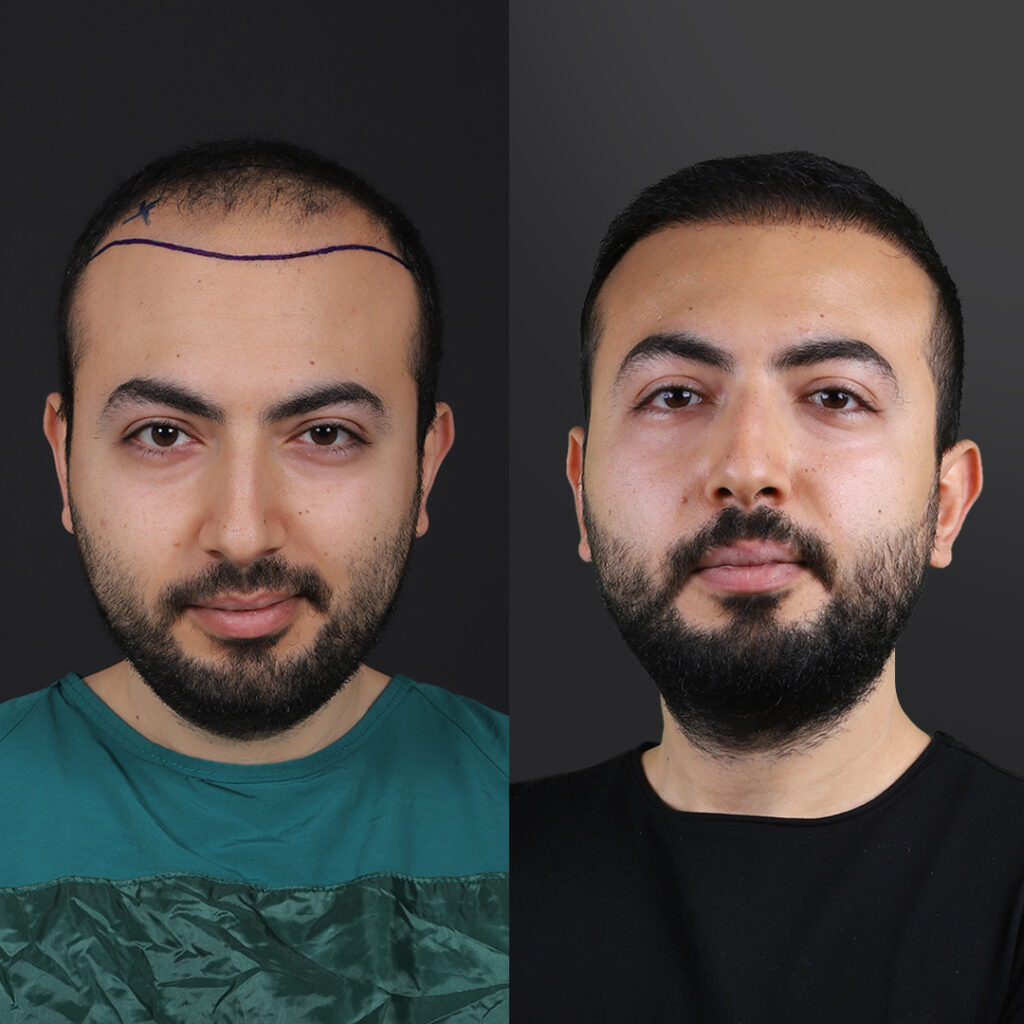Hair transplantation is a surgical procedure aimed at restoring hair growth in areas where hair is thinning or balding. The results of a hair transplant can vary based on individual factors such as the extent of hair loss, the technique used, and the patient’s healing process. Here’s what you can typically expect regarding the timeline and permanence of results after a hair transplant:
Timeline for Seeing Results:
- Immediate Post-Procedure: After a hair transplant procedure, there is typically a recovery period where the scalp needs time to heal. Initially, the transplanted hair may fall out within the first few weeks due to shock loss, which is a normal part of the process.
- Early Growth Phase (2–3 months): New hair growth starts to become visible within 2 to 3 months after the procedure. Initially, the hair may be thin and fine, but it gradually thickens over time.
- Progressive Improvement (6–12 months): Significant growth and thickening of transplanted hair can be expected between 6 to 12 months post-procedure. During this period, patients typically notice more coverage and density in the transplanted area.
- Final Results (12–18 months): The final results of a hair transplant can be assessed around 12 to 18 months after the procedure. By this time, the transplanted hair should have fully matured and grown out to provide a natural appearance.
Factors Affecting Results:
- Individual Healing: The rate of recovery and hair growth can vary among individuals. Factors such as age, overall health, and genetic predisposition play a role in the outcome.
- Technique Used: Different hair transplant techniques, such as follicular unit transplantation (FUT) or follicular unit extraction (FUE), may have varying timelines for results, but both generally follow a similar growth pattern.
- Post-Operative Care: Following proper post-operative care instructions provided by your surgeon can help optimize healing and enhance the growth of transplanted hair.
Permanence of Results:
Hair transplants are considered a permanent solution for hair loss because the transplanted hair follicles are typically genetically resistant to balding. This means that the hair extracted from the donor area (usually the back or sides of the scalp) is less likely to fall out over time. The permanence of results relies on the following factors:
- Donor Dominance: Hair follicles from the donor area maintain their genetic resistance to balding even after being transplanted to the recipient area.
- Natural Hair Growth Cycle: Transplanted hair will follow the natural growth cycle of hair, including shedding and regrowth. However, once the transplanted follicles establish and grow, they should continue to grow like normal hair.
- Overall Hair Care: Proper hair care practices, including avoiding damage and protecting against further hair loss (such as through medications or lifestyle adjustments), can help maintain the longevity of hair transplant results.
In summary, while it takes several months to see the full results of a hair transplant, the procedure offers a permanent solution for many individuals experiencing hair loss. Patience during the initial stages of recovery and adherence to post-operative care instructions are essential for achieving optimal results.





Comments